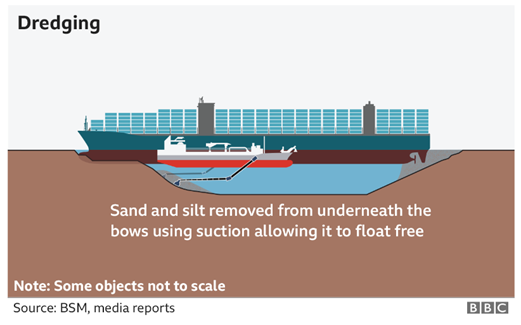The 400m (1300ft) Ever Given was stuck in the mud and sand right across the southern end of the canal since Tuesday.
How was the ship moved?
A fleet of tugs using cables or placing themselves directly alongside the stricken ship, worked for many days to free it.



«Large machines stick down into the water and basically pull dirt up from the bottom, which you can then deposit onshore.»
The company which manages the running of the vessel, Bernhard Schulte Shipmanagement (BSM) said an additional specialist «suction dredger» had been brought in, able to shift 2,000 cubic metres (440,000 gallons) of material every hour.
The combination of the tug boats and dredging equipment dislodged the ship.
If these had failed, there would have been a third option — removing some cargo and fuel from the boat.
It would have required a delicate and lengthy operation.

A ship the size of the Ever Given can carry as many as 20,000 twenty-foot containers and an operation to remove these by crane would have been highly challenging.

The full version of the article is available here.



